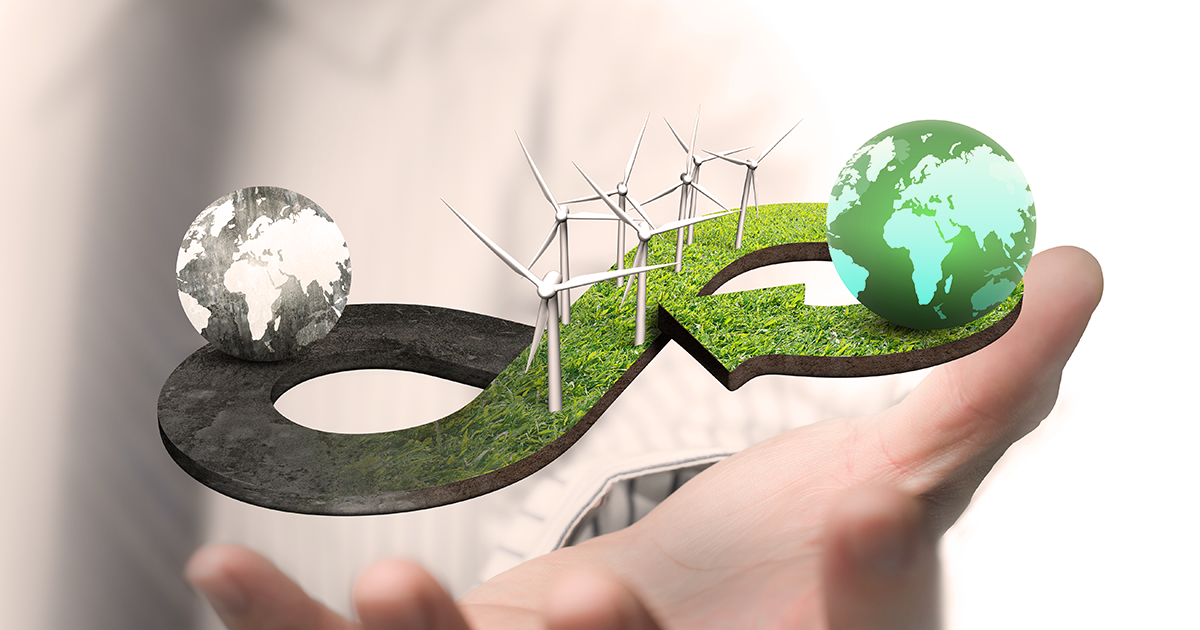In 2019 over 750 global experts and decision-makers were asked to rank their biggest concerns in terms of likelihood and impact. For the first time in the annual Global Risks Report, published in January 2020, the top five global risks in terms of likelihood are all environmental.
Top five global risks in terms of likelihood- Extreme weather events that cause major damage to infrastructure, property and loss of human life
- Failure of climate-change mitigation and adaptation by governments and businesses.
- Human-made environmental damage and disasters, including environmental crime, such as oil spills, and radioactive contamination.
- Major biodiversity loss and ecosystem collapse with irreversible consequences for the environment, resulting in severely depleted resources for humankind as well as industries.
- Major natural disasters such as earthquakes, tsunamis, volcanic eruptions, and geomagnetic storms.
Their biggest short-term concerns are ‘economic confrontations’ and ‘domestic political polarization’. Both slowing down the global collaboration on tackling the 5 shared environmental risks. In addition, the Global Preparedness Monitoring Board – an independent body that assesses how ready we are for a worldwide emergency – released their first report in the Autumn of 2019 resulting in a snapshot of where the world stood in its ability to prevent and contain a global health threat. Its conclusion? Not good: “For too long, we have allowed a cycle of panic and neglect when it comes to pandemics: we ramp up efforts when there is a serious threat, then quickly forget about them when the threat subsides. It is well past time to act”.
Then, COVID19 happened
Besides the health risks, the COVID-19 crisis is having serious negative impacts on economic growth and business viability. At the same time, workplace closures, stalling value chains and slowing economic activity has resulted in some unintended, largely positive short-term benefits for the environment, with declining resource use, energy consumption, pollution and waste in many sectors. Because of this, Earth Overshoot Day – the date on which humanity's resource consumption for the year exceeds Earth’s capacity to regenerate those resources that same year – got pushed to August 22 in 2020, while in the year prior it fell on July 29. If we look specifically to Belgium, this date takes place even earlier and by now we have already passed the date in 2021: March 30th. The COVID-19 pandemic might have shrunk humanity's ecological footprint in 2020, only true sustainability where people, the environment, the economy and society are in balance can be achieved by intention and design, not by doom.
Almost 1.5 years after the start of the pandemic, governments and businesses are looking ahead to go ‘back to normal’, while that ‘normal’ is actually the problem. If there is one thing the Global Risk Report and the Global Preparedness Monitoring Board both point out, is that ‘normal’ has failed to prepare us adequately for crises like the COVID-19 pandemic and that it is largely the cause of other crises like climate change and collapsing ecosystems.
So, where does a circular economy come in?
We must create a more resilient system that ensures the health and safety of all people. A system in which we reframe our relationship with the natural world. A system in which we are stronger in the face of future challenges, where we are able to rapidly adapt and respond to disruptions and in which we are less dependent on global intertwined supply chains. A system where creativity, cooperation and transparency are central. And that system is circular.
In the course of May and June 2020, Flanders Circular and VITO conducted a resilience survey among various organizations, going into detail on how the organizations experienced the COVID-19 crisis and how they look to the future. The resilience survey highlights three success factors that make companies more resilient to disruption: renewed focus on local and connected business; and the infinite resource of creativity and cooperation.
All three success factors are fundamental in a circular economy. During the COVID-19 crisis in Flanders, circular companies experienced fewer shortages in for example finite resources and raw materials, parts, falling customer demand or financing, than other companies during the COVID19 crisis: 34% of circular companies experienced shortage compared to 98% of ‘business-as-usual’ companies. The circular strategies that lead to fewer shortages, appear to focus mainly on local, short supply chains and less (finite) material use. It shows that circular strategies do not only make companies more sustainable, they also make them more resilient.
To conclude: the best way to build resilience against future pandemics and the impact of climate change is to move to a circular economy.
Prepare your organization with ‘Mastering Sustainable Transformation' >




